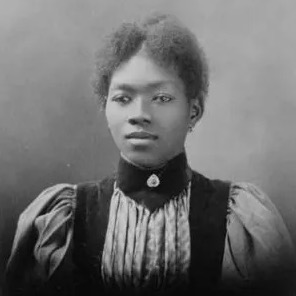In 1859, Harriet E. Wilson (1825-1900) published Our Nig: or, Sketches From the Life of A Free Black. The largely autobiographical novel, published at her own expense, tells the story of Frado, a biracial indentured servant living with a white family. Wilson is recognized as the first African American to publish a novel in English.
Long thought to be the work of a white author, Wilson’s novel fell into obscurity until 1983 when Harvard University Professor and leading scholar of African-American literature, Henry Louis Gates, republished it while working on the Black Periodical Literature Project as a MacArthur Foundation Fellow. His discovery, that the author was an African American woman, secured the book’s place in history as a both a classic of African American literature and the first novel written by an Black woman in the world.
The story of Wilson’s early life continues to unfold. Much of what is known about her early years is based upon the story line of Our Nig. She is believed to have been born in Milford, New Hampshire to a free black man and a white mother. When she was young, her father died and her mother, unable to care for her, sent her to live with a white family as an indentured servant.
For three months a year for three years she attended school. However, Wilson continued to work in a series of domestic roles, moving frequently. According to research by The Harriet Wilson Project, from 1847-1850 she is listed as a town pauper, boarding with local families.
In 1851, she married Thomas Wilson, a freedom seeker. The marriage was not a success and she was left to support their newborn son who was born in a poor house. Destitute, Wilson wrote Our Nig. The novel, published by an abolitionist printer in Boston, was unsettling. Its powerful narrative wasn’t one of over-coming adversity but one of struggle and racism. The book, Wilson’s only published novel, was not widely read at the time.
In her later years, Wilson became involved with the Spiritualism movement, serving as a public speaker and medium. Her involvement included forming children’s progressive lyceums. In 1883, she announced the opening of a new Sunday school for children of “the liberal minded” in the “Ladies’ Aid Parlors” in Boston where she lived.
In her role as a spiritualist and trance reader, Wilson traveled throughout New England, often speaking before large gatherings. When she died in 1900 in Quincy, Massachusetts, she was identified as a nurse.
In 2003, The Harriet Wilson Project was established in her birthplace of Milford to promote the state’s Black heritage and acknowledge the contributions to its history and culture made by Wilson and other African Americans. In 2006, a sculpture of Wilson by Fern Cunningham, the first monument in New Hampshire to honor a person of color, was erected in Milford’s Bicentennial Park in her honor. In 2023 the Harriet E. Wilson marker on the Black Heritage Trail of New Hampshire was unveiled.

